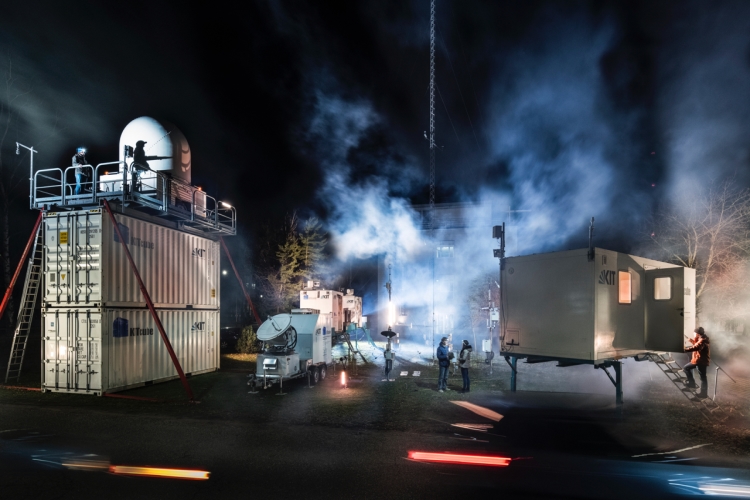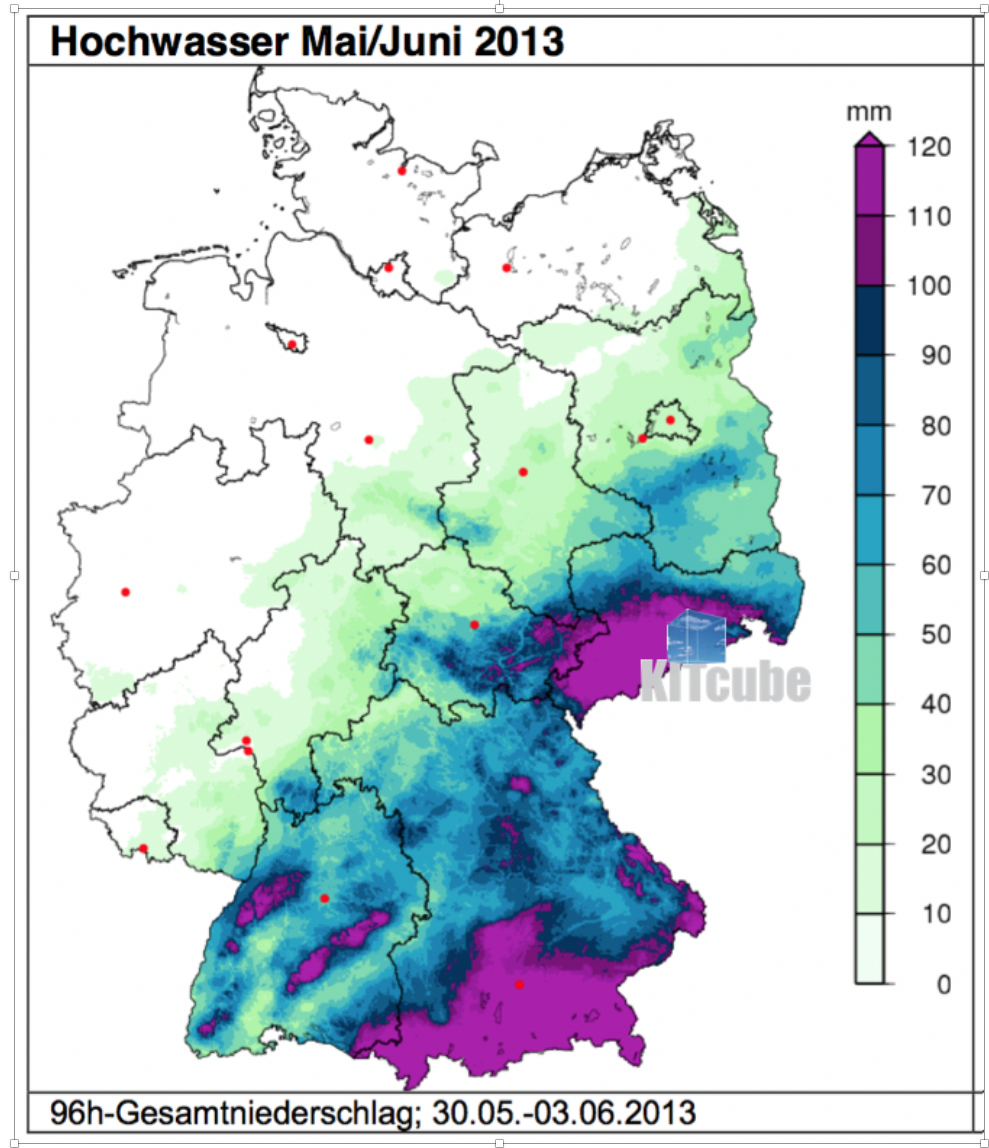Will there be a flood after the heat wave?
 |
 |
| Fig. 1: The IMKTRO is investigating heavy precipitation events within MOSES using the mobile atmospheric observation system KITcube. Photo: Markus Breig / KIT | Fig. 2: 96h accumulated precipitation during the Elbe food in 2013. The KITcube logo marks the observation area for the first MOSES campaigns in 2019 and 2020. Source: Wettergefahren-Frühwarnung, Data: Deutscher Wetterdienst |
In order to be able to investigate extreme events and trends in the Earth system in detail, the Helmholtz Centres in the research field Earth and Environment are jointly developing the new earth observation system MOSES - Modular Observation Solutions for Earth Systems https://moses.eskp.de/home/.
In the focus of interest are the effects of disturbances on entire event chains - in the case of "Hydrological Extremes" e.g. from a heavy precipitation event to an entire river system, from landscape evolution due to flooding over nutrient and pollutant transports to changes in the ecosystem.
The IMKTRO participates in MOSES with its mobile atmospheric observation system KITcube http://www.imk-tro.kit.edu/4635.php/ which currently undergoes extensive modifications and adaptions. KITcube's radar and lidar instruments, microwave profilers and radiosondes provide important information on the formation and evolution of heavy precipitation, as well as detailed precipitation distributions and information about evaporation. Our partners contribute with their measuring systems and expertise in soil moisture, groundwater, pollutant transport and ecosystems. MOSES allows therefore to study the effects of an extreme event from the source in the atmosphere to the reaction of biosystems in the estuary.
The Elbe river was selected as the study area for the implementation phase of MOSES. The first measurement campaigns, which focus on the interaction between the measuring devices and the near real time data exchange between the partners, will take place from April to July in 2019 and 2020. Our KITcube is deployed to the Müglitztal in the Eastern Ore Mountains, an area in which extreme precipitation events and floods often occur.
Closely linked to the “Hydrological Extremes” is the event chain “Heatwaves” in which the other three IMKs participate. Close cooperation between these two then results, in particular, in the other hydrological extreme - low water.
[Working group: Land Surfaces and Boundary Layer]
